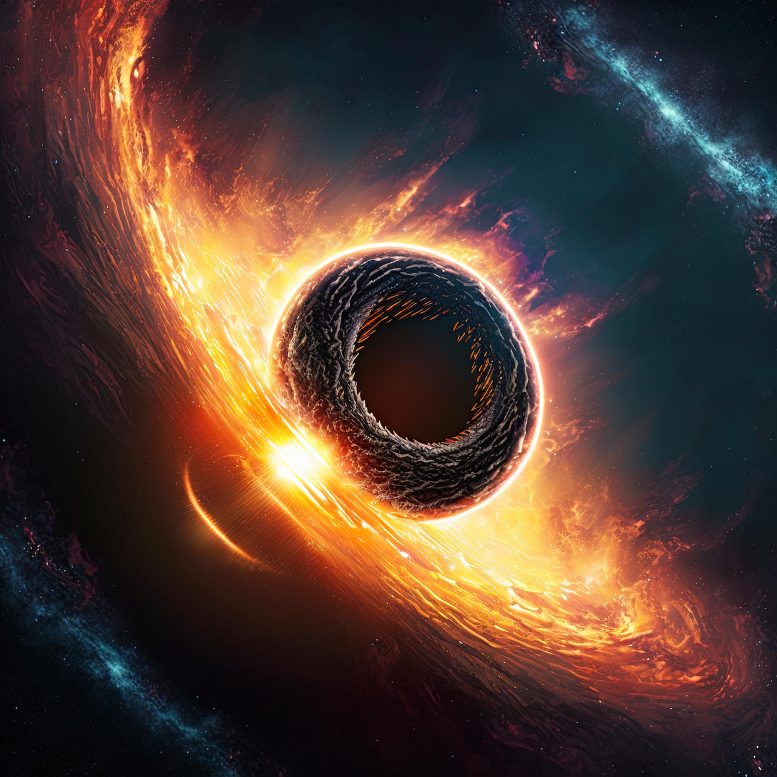
A rare and bizarre cosmic event involving three massive black holes has led to the discovery of an unprecedented phenomenon: a supermassive black hole moving at incredible speeds, leaving a 200,000-light-year-long trail of newborn stars in its wake. Captured accidentally by NASA’s Hubble Space Telescope, this extraordinary contrail of star formation is the result of the black hole barreling through intergalactic space and triggering new star formation as it impacts gas ahead of it. The event, described as a game of galactic billiards, is likely the outcome of multiple collisions among supermassive black holes, leaving astronomers eager to investigate further with the James Webb Space Telescope and the Chandra X-ray Observatory.
A Bizarre 200,000-Light-Year-Long Bridge Links a Galaxy to Its Escaping Black Hole
The universe is so capricious that even the slightest things that might go unnoticed could have profound implications. That’s what happened to Yale astronomer Pieter van Dokkum when he was looking through Hubble Space Telescope images and noticed a suspected blemish that looked like a scratch on photographic film. For Hubble’s electronic cameras, cosmic rays skimming along the detector look like “scratches.” But once spectroscopy was done on the oddball streak van Dokkum realized it was really a 200,000-light-year-long chain of young blue stars located over halfway across the universe! van Dokkum and his colleagues believe that it stretches between a runaway monster back hole and the galaxy it was ejected from. The black hole must be compressing gas along its wake, which condenses to form stars. Nothing like it has ever been seen anywhere else in the universe before.
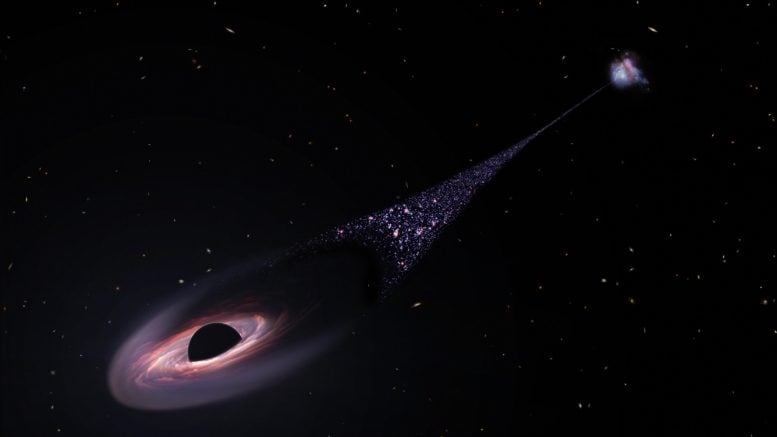
This is an artist’s impression of a runaway supermassive black hole that was ejected from its host galaxy as a result of a tussle between it and two other black holes. As the black hole plows through intergalactic space it compresses tenuous gas in front to it. This precipitates the birth of hot blue stars. This illustration is based on Hubble Space Telescope observations of a 200,000-light-year-long “contrail” of stars behind an escaping black hole. Credit: NASA, ESA, Leah Hustak (STScI)
Hubble Space Telescope Sees Possible Runaway Black Hole Creating a Trail of Stars
There’s an invisible monster on the loose, barreling through intergalactic space so fast that if it were in our solar system, it could travel from Earth to the Moon in 14 minutes. This supermassive black hole, weighing as much as 20 million Suns, has left behind a never-before-seen 200,000-light-year-long “contrail” of newborn stars, twice the diameter of our Milky Way galaxy. It’s likely the result of a rare, bizarre game of galactic billiards among three massive black holes.
Rather than gobbling up stars ahead of it, like a cosmic Pac-Man, the speedy black hole is plowing into gas in front of it to trigger new star formation along a narrow corridor. The black hole is streaking too fast to take time for a snack. Nothing like it has ever been seen before, but it was captured accidentally by NASA’s Hubble Space Telescope.
“We think we’re seeing a wake behind the black hole where the gas cools and is able to form stars. So, we’re looking at star formation trailing the black hole,” said Pieter van Dokkum of Yale University in New Haven, Connecticut. “What we’re seeing is the aftermath. Like the wake behind a ship we’re seeing the wake behind the black hole.” The trail must have lots of new stars, given that it is almost half as bright as the host galaxy it is linked to.
The black hole lies at one end of the column, which stretches back to its parent galaxy. There is a remarkably bright knot of ionized oxygen at the outermost tip of the column. Researchers believe gas is probably being shocked and heated from the motion of the black hole hitting the gas, or it could be radiation from an accretion disk around the black hole. “Gas in front of it gets shocked because of this supersonic, very high-velocity impact of the black hole moving through the gas. How it works exactly is not really known,” said van Dokkum.
“This is pure serendipity that we stumbled across it,” van Dokkum added. He was looking for globular star clusters in a nearby dwarf galaxy. “I was just scanning through the Hubble image and then I noticed that we have a little streak. I immediately thought, ‘oh, a cosmic ray hitting the camera detector and causing a linear imaging artifact.’ When we eliminated cosmic rays we realized it was still there. It didn’t look like anything we’ve seen before.”
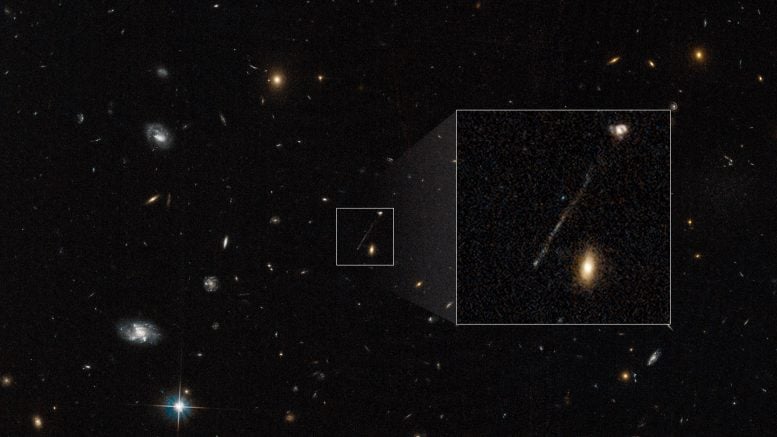
This Hubble Space Telescope archival photo captures a curious linear feature that is so unusual it was first dismissed as an imaging artifact from Hubble’s cameras. But follow-up spectroscopic observations reveal it is a 200,000-light-year-long chain of young blue stars. A supermassive black hole lies at the tip of the bridge at lower left. The black hole was ejected from the galaxy at upper right. It compressed gas in its wake to leave a long trail of young blue stars. Nothing like this has ever been seen before in the universe. This unusual event happened when the universe was approximately half its current age. Credit: Science: NASA, ESA, Pieter van Dokkum (Yale), Image Processing: Joseph DePasquale (STScI)
Because it was so weird, van Dokkum and his team did follow-up spectroscopy with the W. M. Keck Observatories in Hawaii. He describes the star trail as “quite astonishing, very, very bright and very unusual.” This led to the conclusion that he was looking at the aftermath of a black hole flying through a halo of gas surrounding the host galaxy.
This intergalactic skyrocket is likely the result of multiple collisions of supermassive black holes. Astronomers suspect the first two galaxies merged perhaps 50 million years ago. That brought together two supermassive black holes at their centers. They whirled around each other as a binary black hole.
Then another galaxy came along with its own supermassive black hole. This follows the old idiom: “two’s company and three’s a crowd.” The three black holes mixing it up led to a chaotic and unstable configuration. One of the black holes robbed momentum from the other two black holes and got thrown out of the host galaxy. The original binary may have remained intact, or the new interloper black hole may have replaced one of the two that were in the original binary, and kicked out the previous companion.
When the single black hole took off in one direction, the binary black holes shot off in the opposite direction. There is a feature seen on the opposite side of the host galaxy that might be the runaway binary black hole. Circumstantial evidence for this is that there is no sign of an active black hole remaining at the galaxy’s core. The next step is to do follow-up observations with NASA’s James Webb Space Telescope and the Chandra X-ray Observatory to confirm the black hole explanation.
NASA’s upcoming Nancy Grace Roman Space Telescope will have a wide-angle view of the universe with Hubble’s exquisite resolution. As a survey telescope, the Roman observations might find more of these rare and improbable “star streaks” elsewhere in the universe. This may require machine learning using algorithms that are very good at finding specific weird shapes in a sea of other astronomical data, according to van Dokkum.
The research paper was published on April 6 in The Astrophysical Journal Letters.
Reference: “A Candidate Runaway Supermassive Black Hole Identified by Shocks and Star Formation in its Wake” by Pieter van Dokkum, Imad Pasha, Maria Luisa Buzzo, Stephanie LaMassa, Zili Shen, Michael A. Keim, Roberto Abraham, Charlie Conroy, Shany Danieli, Kaustav Mitra, Daisuke Nagai, Priyamvada Natarajan, Aaron J. Romanowsky, Grant Tremblay, C. Megan Urry and Frank C. van den Bosch, 6 April 2023, The Astrophysical Journal Letters.
DOI: 10.3847/2041-8213/acba86
The Hubble Space Telescope is a project of international cooperation between NASA and ESA. NASA’s Goddard Space Flight Center in Greenbelt, Maryland, manages the telescope. The Space Telescope Science Institute (STScI) in Baltimore conducts Hubble science operations. STScI is operated for NASA by the Association of Universities for Research in Astronomy, in Washington, D.C.

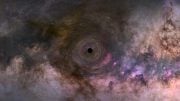
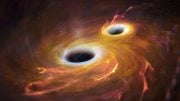
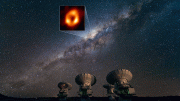
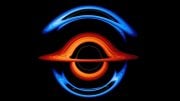
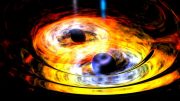
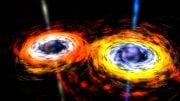
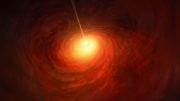
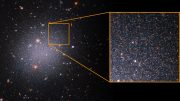
LOL… All of this HOOPTIE over a “scratch” on a piece of “film”… Through a glass darkling…
Science Fantasy… at a cost of BILLION$…
@Alexiev, Do you really think the HST uses film?
No… That’s why “FILM” is in quotes. If one reads the article, the “body in question” is a presumptive projection, which includes a rather fanciful illustration. Whatever it is, it isn’t THERE anymore. It has moved on. As we all must.
👋
Oh! Look! It’s a Flock of Turtles!
Dang! Missed it!
The knowledge of the supermassive black hole and its binary partner remains and has so far confirmed what we know. Astronomers don’t care if the system is different at later times, they reference Earth observations as “now”.
By tha way, neat fantasy about science being fantasy. Unfortunately it doesn sell as well as science fiction and fantasy movies.
The larger the mass, the harder it is to get it to move. So then how is this thing then barreling through the Universe? Some even think there is no actual mass anymore at the heart of black holes and that they’re just rips in the fabric of space-time. I guess not….(Or this isn’t what they think it is)
Black holes have effective mass, whether or not matter exists in their innards or not. (We can’t look inside, so nobody knows, but ordinary matter has given way to the forces which is what made the black hole in the first place.)
As for the momentum buildup and release, it is described in the article. Think of it as a group of hand holding ice dancers that spin around a common center and then let go. They don’t need to push away to separate at great speeds, and viewed from a distance the combined group doesn’t move since the radial momentum sums to zero.
“Then another galaxy came along with its own supermassive black hole. This follows the old idiom: “two’s company and three’s a crowd.” The three black holes mixing it up led to a chaotic and unstable configuration. One of the black holes robbed momentum from the other two black holes and got thrown out of the host galaxy. The original binary may have remained intact, or the new interloper black hole may have replaced one of the two that were in the original binary, and kicked out the previous companion. When the single black hole took off in one direction, the binary black holes shot off in the opposite direction.”
“barreling through intergalactic space so fast that if it were in our solar system, it could travel from Earth to the Moon in 14 minutes.”
That is not really a very high speed for an interstellar object to have, considering that we get hit by meteors every day at speeds far exceeding this.
At that rate of speed (less than 30,000KM/hr) it would take nearly 38 years to travel from one end of the solar system to the other (using the diameter of Neptune’s orbit as the defining distance – roughly 9.09 billion kilometers). It sure doesn’t seem like it is “streaking too fast to take time for a snack.”. Even if it’s rotation pushes aside a lot of matter as it is traveling, it has to be pulling in a lot of the interstellar gas it is plowing through.
The stars being created in the turbulent wake do show how much gas there is between galaxies, though. If that level of interstellar gas is roughly the same throughout the universe, it becomes another strong argument against the existence of dark matter.
There seems to be a mistake about the speed of the black hole in this article.
Other sites referring to this black hole have it’s speed listed as being over 6 Million KPH. Over 200 times faster than the above mentioned 14 minute trip to the moon.
Too bad I can’t delete my previous comment in light of this new information.
Henery E that will teach you to act like you know what youre talking about. Reposting already common knowledge doesnt make you smart. I a an alien and my spaceship can travel faster than a comet, leap tall planets in a single bound.My planet calls me The Coyote and my spaceship The Roadrunner. Beep Beep
I had an interesting thought. Is there a speed to mass ratio for a black hole that can be found to show that the black hole in the article is moving to fast to pull in additional matter, or at least greatly slow down its feasting. Instead the BH is just essentially a giant flinger of matter all over the universe. Oddly enough if these kind of interactions played out often in the early universe now we know how galaxys formed so quickly as BH similar to this probably help seed them.
Mehrdad July 10, 2023 at 11:18 AM Your comment is pending review. Regarding astronomy, I wrote a book on the revival of the earth and the destiny of man, and after forty years of research, I am now writing a summary of the key contents of the book, in summary, from four billion years ago to now, from the big arm of the galaxy, which is the seat of the sun, and millions of stars and systems in the neighborhood. We are located and because the speed of the stars of this big arm of the galaxy is tens of times faster than our sun, those stars of the solar system are located in the arm of the galaxy, but tens of millions of years ago the sun passed through there and at some time or rather the arm of the galaxy because They move at the speed of thousands of kilometers per second. Stars are likely to collide with the sun and the big planets of the solar system, such as Jupiter and Saturn. In our solar system, hundreds of stars and planets have collided with the sun, Jupiter and Saturn, and the effects of these collisions can be seen in the planets of the solar system and the sun. Let me give you a simple example. Consider that we put the stars of the large arm of the galaxy in a cylinder or a metal box. What happens when we remove one of the stars in the middle of the box? The stars, which are stars, fill the empty space in the box. It is the same in space. The difference between the earth and the galax i m dentistory adres tehran darabad haspital masihdanshvary strit porabtehaj nomber 6 vahed 8 doctor mohammad aghakasiri home 00982126159916
cylinder or a metal box. What happens when we remove one of the stars in the middle of the box? The stars, which are stars, fill the empty space in the box. It is the same in space. The difference between the earth and the galaxy is that on earth, the gravity of the earth pulls the stars downward, but in space, the core of the galaxy pulls the stars towards the space. The empty space that we have explained pulls the interstellar attraction away from the empty space that was the location of the solar system
It pulls the stars towards the empty space that we explained, and the attraction between the stars pulls the empty space, which is the location of the solar system, and from there it collides with a distant star that has hit the galaxy. It has collided with a star in the arm of the galaxy for every half circle that it has traveled, and these collisions have continued at least hundreds of times. Because of this, the mass and hydrogen gas of the sun has either increased or remained the same, and that is why the earth has not cooled after billions of years. The sun did not take the gas of the stars, the evolution of living things did not take place. By looking at hundreds of stars in the arm where the sun is located in this big arm of the galaxy, by measuring the volume of the stars that were in the neighborhood of the sun, you can understand how much gas the sun has. And the crime of installing it on other stars has been greater, and how many stars have been swallowed, and how many times the life of the earth has been renewed, and the earth has experienced several civilizations more advanced than us, the people of today, and the people who lived before us on the earth and before they were destroyed, from these incidents. They were aware, like American scientists, who are more prophetic than all other countries in the field of astronomy and space. When I wrote the book on the revival of the earth and the destiny of man, our son-in-law, who is a retired pilot and completed his pilot’s cou
I told our son-in-law that I had said that one or more stars or rather several systems of very small stars of the Milky Way will collide with solar bodies. Our great son-in-law, who was a pilot himself and had completed a pilot course in the United States, is 100% certain, said Agha Mehr, you said that. A few small stars will hit the sun in a thousand years. I myself was at the Voice of America satellite. America, their scientists said that in 800 years a star will hit the sun and life on earth may be destroyed, but I had already said in 1000 years